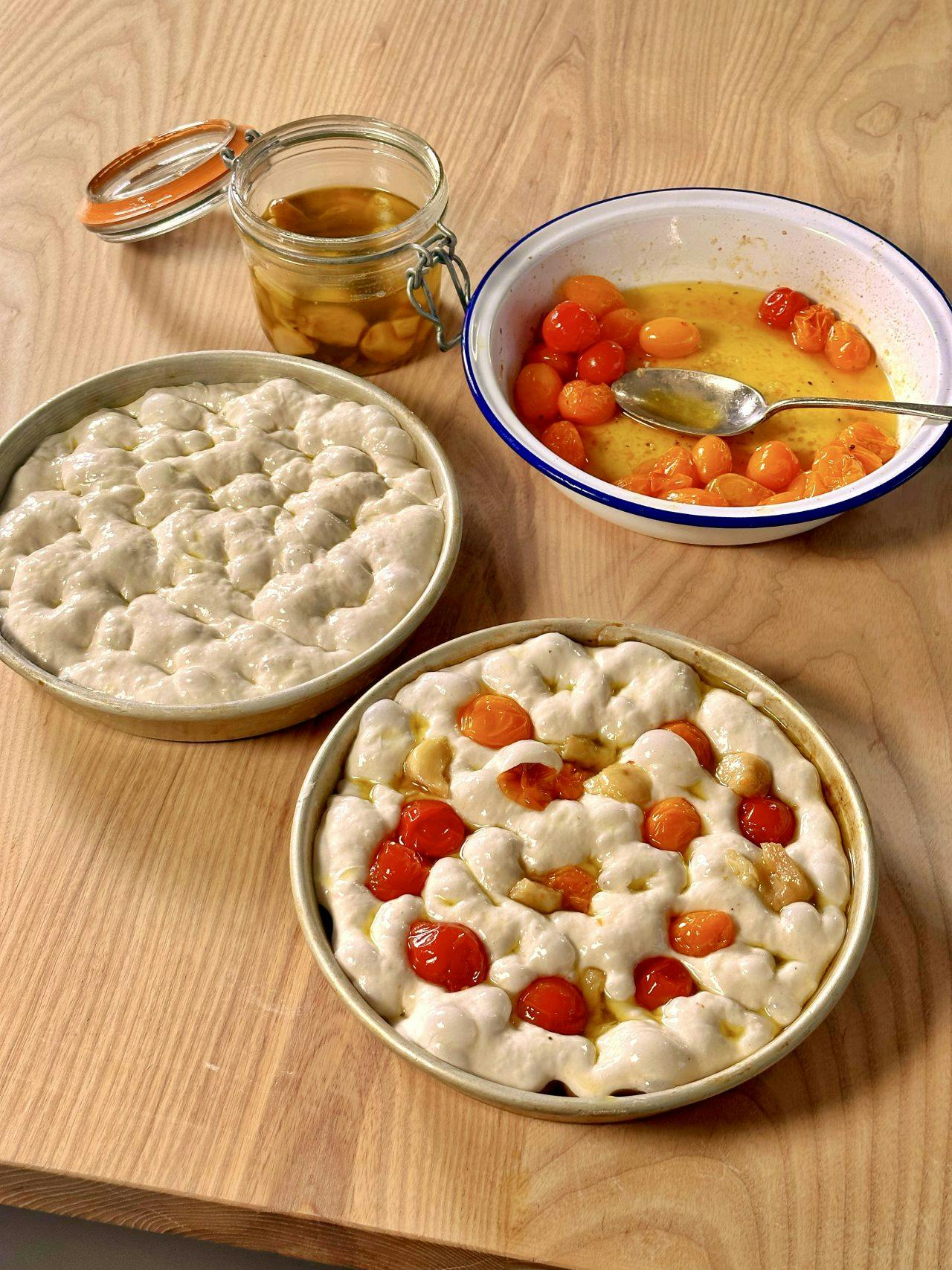FOCACCIA
This is one of my favourite breads. It makes a fantastic sandwich, but I like it eat it before a pasta dinner, served with a small bowl of green olive oil drizzled with balsamic vinegar.
Be prepared to set aside an afternoon to make this, it’s not a speedy process, but it’s good to make it alongside fresh pasta and a pasta sauce on an autumn afternoon. There’s nothing more comforting than the scent of freshly-baked bread in the house.
Subscribe to my free newsletter to see the full recipe.
I won’t bombard you – and I will never share your address or use it for any other contact.
Place the flour in a large mixing bowl. Crumble the yeast into the water and allow it to dissolve, then pour it into the bowl of flour. Mix well to form a loose, wet dough, but don’t knead it; simply set aside, covered with cling film or plastic wrap, and leave for 2–3 hours until it has doubled in size and has a lovely yeasty smell.
Place the pre-ferment in the bowl of a KitchenAid (or in a large bowl if you’re going to mix by hand), then add the flours. Crumble the yeast into the water, add the honey, mix well until dissolved, then pour approximately three-quarters of the water mixture into the flour. If you’re using a KitchenAid, use the standard paddle attachment and mix on a medium speed for 5 minutes. Switch off and rest the dough for 5 minutes, then mix again for 5 more minutes, this time slowly adding the remaining water along with the salt (don’t forget the salt, as I have done before!) Once the dough is smooth, cover it and set aside for 30 minutes.
If you are kneading the dough by hand, use the slap-and-fold technique until the dough is beginning to hold its shape, then add the rest of the water a little at a time and continue to knead. Sprinkle in the salt with the last amount of water and keep kneading until the dough is smooth and strong. Transfer to a clean bowl and set aside, covered, for 30 minutes.
Now you are ready to fold the dough. Do this in the bowl (there’s no need to lift it onto a work surface). Lift one edge and fold it over into the middle of the dough, moving the bowl round clockwise so that each side of the dough is folded in turn, at 3, 6, 9 and 12 o’clock. Cover the bowl again for 30 minutes, then repeat the folding, cover again and fold again. The aim is to strengthen the gluten, so this folding needs to happen at least three times. It’s probably a good idea to set a timer each time.
After the dough has rested for the last 30 minutes, tip it onto a clean work surface and divide it in half with a dough scraper. Use the scraper to form the dough into a rough circle, then lift each one and place it in an oiled shallow cake tin – I used two 20cm/8” tins lined with baking parchment.
Drizzle the dough with olive oil and then, using wet fingers, push indents into the surface; these will capture the olive oil and make a classic bubbled top. Cover for 20 minutes.
Pre-heat the oven to 200°C fan/400°F/gas mark 6. Fill an oven-proof dish with water and place this on the bottom of the oven – this will create steam and help create a crunchier crust.
Uncover the dough. For a classic focaccia, oil your fingers and press them into the dough again, sprinkle the top generously with sea salt flakes and a final dash of olive oil. For a more complex focaccia, scatter the top with a handful of cherry tomatoes and a few cloves of confit garlic, oil your fingers and press some of them gently into the dough. Season with sea salt flakes and drizzle with olive oil, then place the tins into the oven (be careful not to get a face-full of steam when you open the oven door). Bake for 25 minutes until golden brown.
Remove from the oven and stand the tins on a cooling rack, resisting the temptation to start eating them straightaway. Eat them when they’re fresh, preferably warm, but if you’re keeping them for a day you will need to refresh them in the oven.

